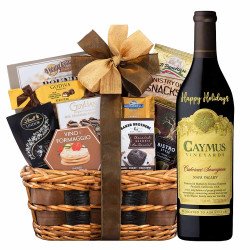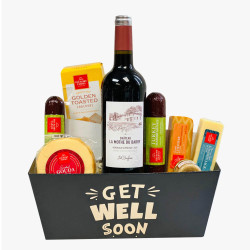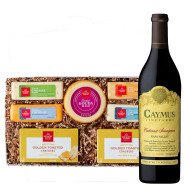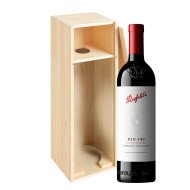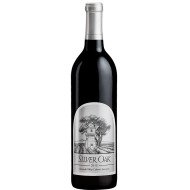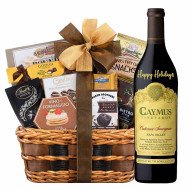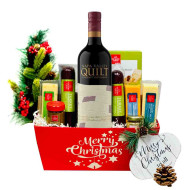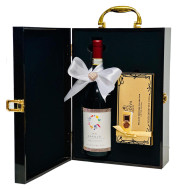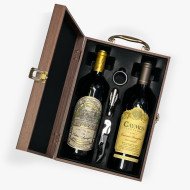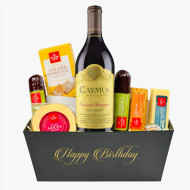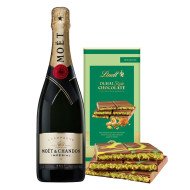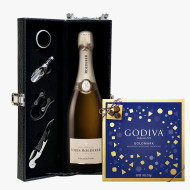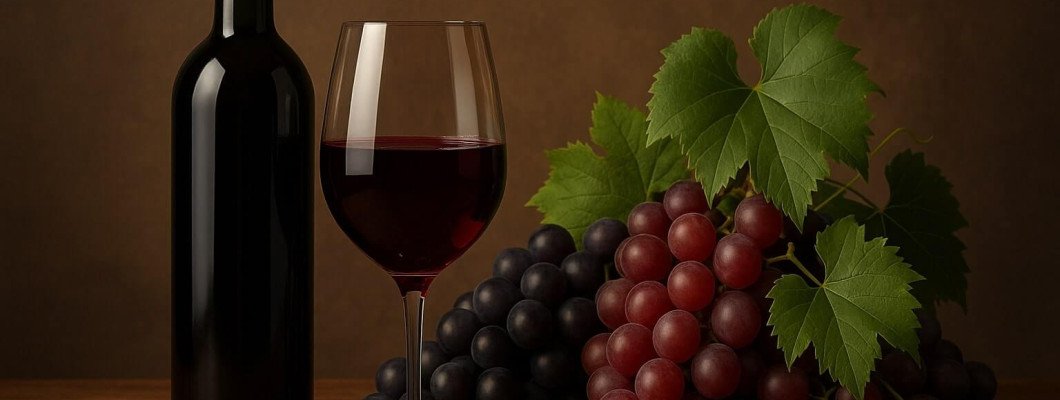
If you’re diving into the world of wine, one thing becomes clear very quickly—there are a lot of grape varieties out there. In fact, there are over 1,000 known wine grape varieties grown across the globe. But here’s the good news: you don’t need to know them all to start enjoying and appreciating wine like a pro.
By getting familiar with a handful of classic grapes, you can understand most wine lists, shop with confidence, and even impress at dinner parties. So, pour yourself a glass and let’s explore the top grape varieties every wine enthusiast should know.
1. Cabernet Sauvignon – The King of Reds
If wine had a royal family, Cabernet Sauvignon would wear the crown. Known for its bold structure, firm tannins, and notes of blackcurrant, cedar, and spice, this grape thrives in regions like Bordeaux (France), Napa Valley (USA), and in some iconic wine regions of Australia.
Why you should know it:
It’s the backbone of many premium red wines. The copious and velvety tannins, high acidity, long oaky finish on Cabernet Sauvignon make it a preferred choice for steak nights or other hearty meals. Once you learn to recognize Cabernet Sauvignon, you’ll understand half the “big red” wines on any wine list.
2. Merlot – Smooth, Plush, and Approachable
Often seen as Cabernet Sauvignon’s softer sibling and the two are also best of buddies when it comes to creating iconic blends, Merlot offers ripe plum, blackberry, and chocolate notes with silky tannins. Bordeaux blends, Napa reds, and Chilean Merlots are especially worth trying if you’re new to bolder reds or red blends.
Why you should know it:
It’s one of the most drinkable reds for beginners as the plummy fruit surely hits the right chord making it easy to love but still complex enough to please serious wine drinkers. Know your Merlot and choose wine gifts like a pro.
3. Pinot Noir – The Elegant and Mystical Red
Pinot Noir is delicate, aromatic, and notoriously hard to grow. Expect red cherry, raspberry, and subtle earthy notes of forest floor, umami hints like mushrooms on well aged Pinot Noirs. It shines in Burgundy (France), Oregon (USA), New Zealand, and California’s Sonoma Coast.
Why you should know it:
It’s the ultimate food wine—light enough for salmon, yet flavorful enough for duck or creamy mushroom pastas and risottos. The acidity adds freshness to the palate even in case of well-aged Burgundies. Plus, it’s a gateway grape to the nuanced side of wine and hence I like to call it mystical. Add Pinot Noir to your wine list and create endless sumptuous food and wine pairings.
Also Read: Merlot Vs Pinot Noir - Know the Differences
4. Syrah/Shiraz – Bold and Spicy
Syrah (called Shiraz in Australia) brings deep color, dark fruit, pepper spice, and sometimes smoky, meaty flavors. France’s Northern Rhône produces elegant Syrah, while Australian Shiraz is big, juicy, and powerful.
Why you should know it:
Shiraz a great choice when you want richness and spice in your glass—think BBQ meats and veggies, slow cooked lamb, or winter comfort food like spice rubbed lamb chops. Pair Syrah with grilled veggies and sweet potato bowl — a perfect rainy day combo to get you settled by the window!
5. Chardonnay – The Chameleon White
Chardonnay is the world’s most popular white grape for good reason—it can be crisp and citrusy or rich and buttery depending on where and how it’s made. Chardonnay thrives in both warm and cool climate regions, making different styles of wine. Burgundy’s Chablis offers lean minerality and sharp acidity, while Napa and Australia often go for creamy, oaky styles.
Why you should know it:
It’s everywhere, and it can teach you a lot about winemaking techniques like oak ageing and malolactic fermentation. This makes it known as — the winemaker’s grape. Chardonnay is the grape that lays out a tapestry of choices when it comes to food and wine pairing — Lighter and brighter styles of Chardonnay pair well with light and summery fare like cucumber and cream sandwiches, shrimp cocktail, freshly chopped salads. Pair bolder, oaked and creamy styles of Chardonnay with heartier dishes like creamy lamb stew, juicy cheeseburgers, spinach risotto and so many more cuisines.
6. Sauvignon Blanc – Fresh and Zesty
Known for its high acidity and vibrant flavors of lime, passionfruit, and fresh-cut grass, wet stones. Sauvignon Blanc shines in New Zealand’s Marlborough region, France’s Loire Valley, and Chile. Sauvignon Blanc wines are often fresh and zesty but there are some weightier styles like Sancerre, Pouilly Fumé which are definitely worth a try.
Why you should know it:
It’s a refreshing, easy-to-love white that pairs perfectly with seafood, salads, and sunny afternoons’ garden parties. Sauvignon Blanc is a perfect conversation starter or a magnificent mid-course wine, depending on the food and wine style in question.
Also Read: Chardonnay Vs Sauvignon Blanc - Key Differences?
7. Riesling – The Aromatic Wonder
Riesling ranges from bone-dry to lusciously sweet, offering floral aromas like white blossom and citrus, peach, or honey notes. Germany and Alsace are its classic homes, but Australia’s Clare and Eden Valley regions make stunning dry versions.
Why you should know it:
It teaches you about sweetness levels in wine and ages beautifully—developing complex petrol and honey notes over time. Riesling has a lot more to offer behind its slender image. It is well-loved grape, often referred to as — winegrower’s grape variety. Riesling because of its naturally refreshing nature, pairs well with zesty salads and cheesy pizzas alike. Pair sweet Riesling with desserts like fruit tarts or glam up your dessert table by pairing a sweet Riesling with petit fours.
8. Grenache – Juicy and Versatile
Grenache (or Garnacha in Spain) gives red wines with ripe strawberry, raspberry, and spice, often in blends like Côtes du Rhône and Châteauneuf-du-Pape. Grenache is often overlooked by wine beginners, but is actually a great fit given its fruit forward profile even in bold wine styles. Fruity goodness of Grenache makes it perfectly able to produce dry and fresh rosé wines.
Why you should know it:
It’s the friendly, fruit-forward grape that shows up in many Mediterranean blends—and makes fantastic rosé wine as we said. Add Grenache to your next picnic basket and soak up the sun in style. Grenache reds pair well alongside meaty sandwiches and hearty veggie bowls alike.
9. Tempranillo – Spain’s Star
Tempranillo is the heart of Rioja wines, bringing flavors of cherry, plum, tobacco, and leather. It’s medium to full-bodied wine with balanced tannins. Younger, early drinking styles of Tempranillo are great for beginners, while full bodied and powerful versions such as the one from Priorat DO of Spain are sure to please the connoisseurs of bigger, bolder reds.
Why you should know it:
It’s a masterclass in how oak ageing transforms a wine—especially in Reserva and Gran Reserva styles from Spain which showcase the amazing winemaking abilities of Spain’s best known producers. Tempranillo does pair well with meat and seafood paella complementing the richness of this comforting Spanish staple.
10. Chenin Blanc – The Shape-Shifter
From sparkling wines in the Loire Valley to rich, honeyed South African whites, Chenin Blanc can be crisp and citrusy or lush and tropical. Chenin Blanc loves all kinds of climates and thus makes vivid wine styles that have notes to appeal all palates.
Why you should know it:
It’s proof that one grape can wear many hats—ideal for adventurous wine drinkers. Chenin Blanc wines pair well with easy dishes like chicken roast, cheesy garlic bread and crunchy salads. Sparkling Chenin Blanc wines like Methodé Cap Classique from South Africa offer a sparkly palate that's easy going and at the time offers subtle complexity.
Also Read: What Grapes Are Used to Make Champagne?
Tips to Remember These Grapes
- Taste side-by-side: Compare a Cabernet Sauvignon and a Merlot to spot the difference in body and tannin.
- Notice regions: Grapes express themselves differently depending on climate and soil.
- Keep a wine journal: Jot down the grape, region, tasting notes, and whether you liked it.
The Bottom Line
Learning these top grape varieties will give you a solid foundation in wine—whether you’re browsing a wine shop, scanning a restaurant list, or planning a cellar. The more you taste, the more you’ll start recognizing their signatures, and before you know it, you’ll be the one recommending bottles at the table.
Pro Tip: Next time you go wine shopping online, pick a grape you don’t know and explore it. You might just find your new favorite.
Explore our diverse range of handpicked wines from most well known grape varieties. Choose from specially curated wine gift baskets — wines are paired with special gourmet treats, put together by our in house wine expert.


